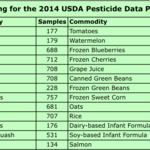Chemistry

A recent study has identified specific intake levels of xanthohumol, a natural flavonoid found in hops, that significantly improved some of the underlying markers of metabolic syndrome in laboratory animals and also reduced weight gain.
Laboratory mice were fed a high-fat diet, and given varying levels of xanthohumol. Compared to animals given none of this supplement, the highest dosage of xanthohumol given to laboratory rats cut their LDL, or "bad" cholesterol 80 percent; their insulin level 42 percent; and their level of IL-6, a biomarker of inflammation, 78 percent.
Because they were still…

The Nipa Nuts
Nipa oil, unknown in the chemistry handbooks, had been characterized in the Philippines and Indonesia. These studies however, do not agree with each other as shown on their results in Table 1.
Table 1 Discrepancies on the characteristic studies on Nipa oil
Tabinas’s Study (1987) [1]
Hamzah’s Study (2011) [2]
Percentage oil
2.87
27.4
Viscosity
NA
76.79
Iodine value
88.94
25.55
Saponification value
195.22
32.86
Specific gravity
0.9153
NA
Refractive index
1.4730
NA…

Learning
from history should keep us from repeating our mistakes. Yet when it comes to
environmental politics, the opposite seems to be true. History and improved
scientific understanding fail to inform, while alarmism and irrational fears drive
policy.
The
current debate related to flame retardant chemicals is a prime example.
Environmental activist groups have petitioned the Consumer Product Safety
Commission (CPSC) to ban an entire class of flame retardant chemicals called
organohalogens, with a decision expected this year. Yet, the scientific justification
for such bans has long been…

So, if you take literally what Patricia Hunt, Ph.D. and colleagues reported in the new issue of the Journal of Clinical Endocrinology and Metabolism, you could only conclude that two chemically unrelated, so-called endocrine disruptors alone were costing the EU $1.63 billion in female reproductive disorders. That is, unless they neglected to add the VAT, in which case it will be more.
This paper is weak. It contains more speculation than Game of Thrones fan forums on whether Jon Snow will return for season six.
Since I have only a limited time on Earth, I only want to point…

The rosy periwinkle (Catharanthus roseus) is a plant that produces organic compounds used to treat cancer, arrhythmia, and other medical conditions and now the details of the metabolism process for these compounds on a cellular level has been reveaked. Their data suggests the existence of an unknown mechanism which regulates the creation, movement and distribution of compounds within plants.
Plants are essentially stationary, so in order to protect themselves from insects, wild animals and disease they create a self-defense system of chemical compounds known as secondary metabolites.…

This was a poster I did for the 2012 Meeting of the Society of Toxicology in San Francisco.
Formaldehyde had been produced and used commercially for over 100 years. Only recently, however,has it occupied a prominent place in the news. In 2006, the Federal Emergency Management Agency (FEMA) provided temporary housing(characterized as “toxic trailers” by the media) to hundreds of thousands of people who were rendered homeless by Hurricanes Katrina and Rita in August-September of 2005.
In 2010, US EPA (preceded by IARC in 2006 and followed by NTP in 2011) declared formaldehyde…

Dead European honeybees have almost 57 different pesticides detected, according to a new paper in the Journal of Chromatography A.
Should that be a concern? Not really. The great thing about modern technology is that we can detect parts per trillion, orders of magnitude what can be harmful. Yet proponents of low-dose effect, like environmental groups and researchers enabling them, will want to claim that being able to detect something means it must be bad.
Ten years ago, honeybees were into one of their periodic declines, but mainstream media made a catchy phrase popular - "colony…

Each year, the farmers around the world who produce our food (fruits, vegetables, grains) get the equivalent of a “grade” on a giant “group project.” For 2014 they got another A+ as they have for many years. The “test” entails thousands of food samples, which the USDA collects from normal US food channels and then scrutinizes for pesticide residues using extremely sensitive laboratory testing methods.
They are checking for any detectable residues (41% of samples have none) and whether any of the detectable residues exceed the conservative “tolerances”…

Synthetic cathinones which produce effects similar to amphetamines and have been associated with numerous fatalities are derived from cathinone, which is present in the khat plant.
Only supplement makers and buyers think if it happens in nature it must be okay, but the U.S. Drug Enforcement Administration (DEA) has a hard time keeping up. They can only ban specific synthetic cathinones, and did in 2011, but change a molecule and new designer drugs continue to appear, and they aren't banned because they are different.
Many forensic laboratories routinely use gas…

Organochlorine pesticides (OCPs) are a group of environmental contaminants that were banned in industrialized countries decades ago, but sut since they accumulate through the food chain and remain for a very long time in the human body, especially adipose tissue, they can still be found in a majority of people in most countries.
The most commonly known of these compounds is the pesticide DDT, which has gotten a renewed look due to mosquitoes that carry the Zika virus. Though DDT was banned in the US due to public concern, the United States Environmental Protection Agency (EPA)…